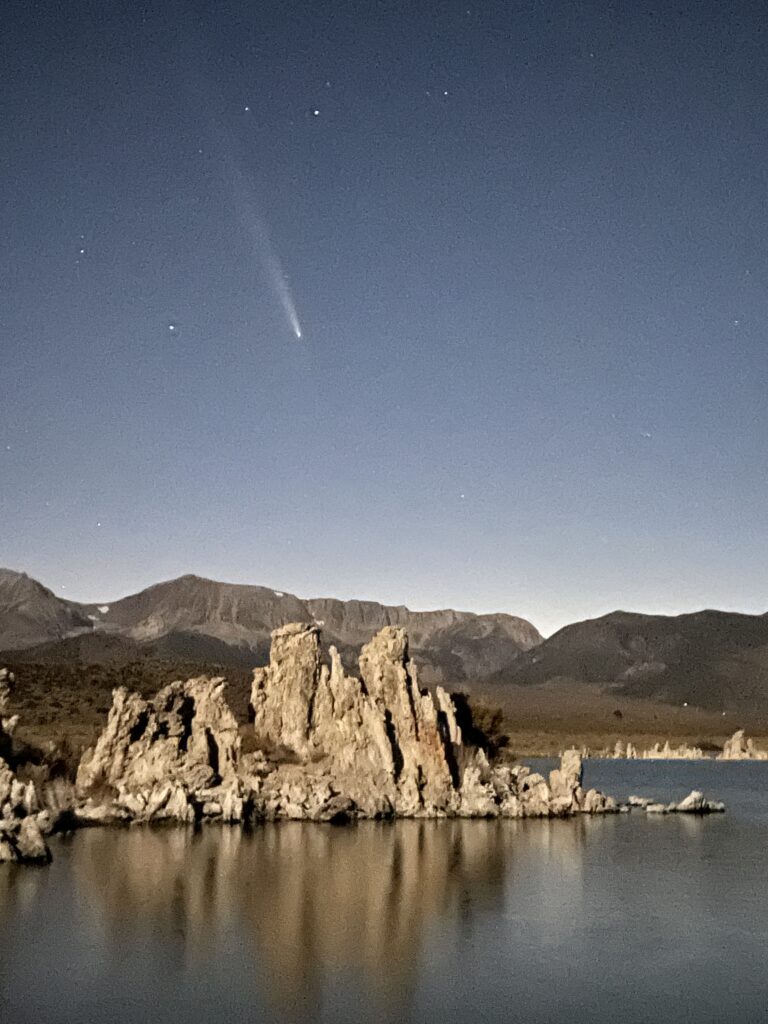
We started the day by driving down to O’Shaughnessy Dam and Hetch Hetchy Reservoir, the facilities that impound the Tuolumne River in a once pristine Sierra valley and bring water to 2.5 million people in the Bay Area (and as part of a larger system including hydroelectric facilities also supply power to some city operations in San Francisco and elsewhere). I hadn’t intended to spend much time there, but we got to walking the trail on the north side of the reservoir and pretty soon it was early afternoon.
We took our time driving over Tioga Pass and down to Lee Vining and checked into a motel and had dinner at the local Mobil gas station — it’s actually a well-known eatery and just what you need if you’ve spent a long day hiking or driving or both. Then we headed to the south shore olf Mono Lake to see whether we could sight Comet Tsuchinshan-ATLAS again. There was a nearly full moon lighting up the tufa formations along the shoreline, but yes, the comet was still clearly visible naked-eyewise and more so with any kind of camera. I didn’t bring a tripod on this trip, so I have to resort to handheld phone-camera shots. There were several guys along the lakeshore shooting the spectacle with professional gear — I imagine we’ll see some of those shots soon.

